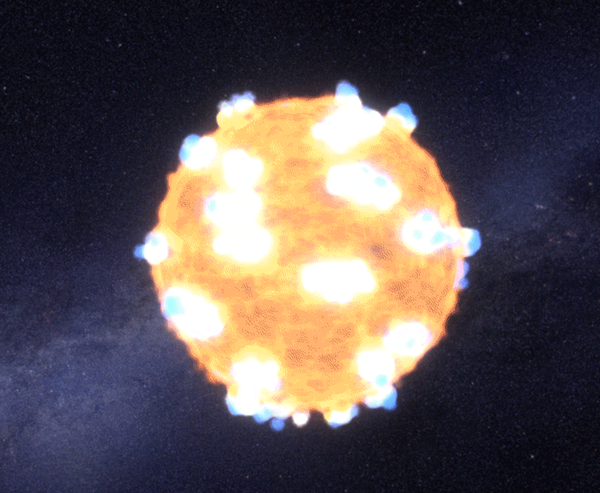This article was published in Scientific American’s former blog network and reflects the views of the author, not necessarily those of Scientific American
The gigantic steller explosion known as a Type 2 supernova, which happens when a massive star collapses, takes about two weeks to reach maximum brightness. At that point, it can briefly outshine an entire galaxy. But the first phase, called the 'shock breakout," takes only 20 minutes. It is a flash of light given off when photons, speeding out of the star's collapsing core, first blast through the outer surface of the star. This short-lived event has proven impossible to capture until now—but by scrutinizing Kepler images of 50 trillion stars in 500 galaxies, taken every half-hour for three years, astronomers managed to find not one, but two shock breakouts in the explosions of two red supergiant stars.
The stars were much too far away, at 700 million and 1.2 billion light-years, for Kepler to take actual images of the breakouts. By carefully analyzing the bursts of light the space telescope detected, however, artists at the NASA Ames Research Center were able to create this simulation. If you'd been in the neighborhood, this is what you might have seen—just before you were vaporized.
On supporting science journalism
If you're enjoying this article, consider supporting our award-winning journalism by subscribing. By purchasing a subscription you are helping to ensure the future of impactful stories about the discoveries and ideas shaping our world today.
But that's not all! In May, 2015 Kepler spotted another an entirely different type of supernova in a scan of 400 galaxies. Known as a Type Ia, this happens when a tiny white dwarf star sucks in matter from an orbiting companion—and when the incoming matter adds up to a critical mass, the white dwarf disappears in a massive thermonuclear explosion. Here's how NASA visualizes it.
